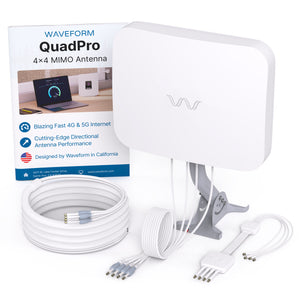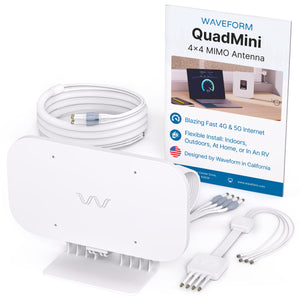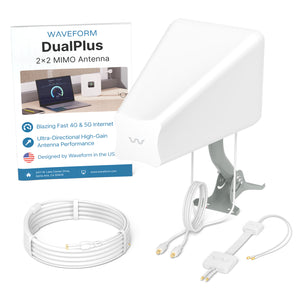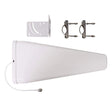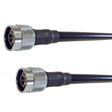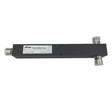Maryland's mix of dense urban corridors, coastal ports, and sprawling industrial parks makes blanket connectivity difficult. Thick masonry in Baltimore's older mill buildings, the wide outdoor yards at Dundalk Marine Terminal, and the security requirements at Fort Meade all push WiFi beyond its limits. One frequent pain point we hear is from distribution centers along the I-95 corridor that need reliable scanner and handheld coverage from dock door to yard without adding thousands of WiFi access points.
Maryland Industries And Venues That Benefit From Private 5G
Manufacturing, logistics, healthcare, and higher education dominate the state's economy. A single small-cell radio on CBRS spectrum can blanket a 1.5 mile radius, so ports in Baltimore or Cambridge can track AGVs and cameras across their yards without the interference that cripples WiFi. At Johns Hopkins and other medical campuses, private LTE keeps bedside devices on a separate, HIPAA-compliant network instead of the crowded guest WiFi. Secure research labs around Aberdeen Proving Ground use dedicated SIM authentication to keep traffic off the public internet altogether.
Weather also plays a role. Maryland's humid summers and hurricane-driven storms mean outdoor APs fail often, forcing IT teams into constant maintenance. Private 5G equipment is ruggedized to carrier standards, so a handful of radios replace dozens of WiFi units and survive salt, wind, and temperature swings.
Looking specifically at urban deployments, we have a separate page for Baltimore Private 5G that dives deeper into city-center challenges.
Private 5G combines the coverage profile of a macro cellular network with the control of an on-prem LAN.
-
Spectrum: CBRS operates at 3.55-3.7 GHz, a band reserved for enterprise users. Unlike WiFi's unlicensed 2.4 GHz and 5 GHz channels, CBRS is lightly occupied and supports far higher transmit power. The result is cleaner signals across parking lots, rail spurs, or multi-building campuses.
-
Capacity: A single 20 MHz CBRS channel delivers roughly 150 Mbps of real-world throughput per sector and schedules traffic deterministically. Heavy forklift scanner traffic no longer disrupts voice calls the way it does on WiFi.
-
Security: Devices join with SIM or eSIM credentials tied to your Active Directory. Traffic breaks out locally, so sensitive PLC data never traverses the public internet as it would on AT&T, Verizon, or T-Mobile.
-
Economics: Public carriers charge per-line fees and throttling is common in busy areas. A private core lets you add hundreds of devices for pennies per month in spectrum leasing costs.
Our Private Networks Guide explains these advantages in depth: What Are Private 5G/LTE Networks?
Our End-To-End Design And Deployment Process
Waveform handles the entire lifecycle so your team can stay focused on operations.
-
Rapid Site Snapshot
You email a floorplan, aerial image, and expected device list. We run an RF propagation model and return a concept design, estimated hardware count, and budgetary range within three to five business days.
-
Detailed RF Engineering
When you are ready to proceed, our engineers build a full-scale model, confirm antenna placements, and produce a bill of materials. We remain vendor neutral, selecting among Celona, Baicells, Airspan, Highway9, or others based solely on your use case.
-
Turnkey Deployment
Our crews install radios, fiber, power, and the private core. We configure SIM provisioning, quality-of-service profiles, and network slicing so critical handhelds always take priority.
-
Device Integration
Need CAT-M sensors, Barcode scanners, or rugged Peplink routers? We supply, configure, and support them, eliminating the finger-pointing that plagues multi-vendor rollouts.
-
Ongoing SLA And Monitoring
Each network includes remote performance monitoring, software updates, and optional 24×7 support. You gain carrier-grade visibility without hiring a cellular engineering team.
Local Experience And Nearby Deployments
While private networks are a newer technology, Waveform has delivered mission-critical wireless systems throughout the Mid-Atlantic. One recent example is a life-sciences manufacturing facility for Celularity in New Jersey. That project required low-latency coverage across cleanrooms and warehouse space, similar to the mixed environments we see in Maryland's biotech corridor around Gaithersburg. The lessons learned in RF isolation, sterile-area cabling, and redundant backhaul translate directly to Maryland deployments.
Transparent Pricing For Maryland Projects
Indoor private 5G runs between $1.00 and $2.50 per square foot turnkey, depending on ceiling heights, cable pathways, and redundancy requirements. Outdoor coverage is even more cost-effective. In flat terrain such as the Eastern Shore, a single sector can serve a 1.5 mile radius for roughly $100,000 including radios, EPC core, and installation. Compared to the recurring license fees of public SIMs or the dense AP counts of WiFi 7, most customers see positive ROI within 18-24 months.
Ready To Connect Your Maryland Site?
Waveform is the experienced connectivity integrator that delivers true, turnkey Private 5G network solutions. Call us at (800) 637-4049 or get a custom private 5g design and quote today.























